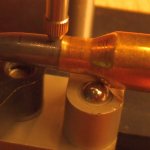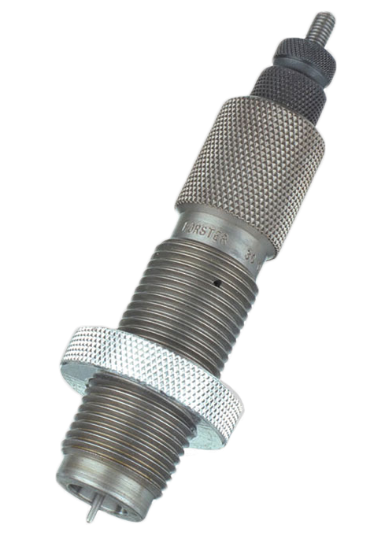I'm hoping for some help/input chasing some issues I'm seeing with my Redding dies.
Context:
So here's what happened.
My research + math showed, that I needed to undersize the neck to a 0.246 bushing to set 2 thou of neck tension after the turning arbor.
Initial measurements of sized brass, and internal diameter mic of the bushing show that there is no way the .246 bushing was actually .246. It was closer to .245 (best case), in reality probably closer to .244. Maybe this one was made on a friday afternoon...
Ok so I ditched that, and pulled out the .247 bushing. The .247, measured out to ~.2465, ok not sure what's up with the stamped .246 bushing, but thats close enough to what I wanted. Moving forward, to concentricity testing.
Thanks!
Context:
- Fairly new to precision reloading, but have been doing a ton of research, and have been loading pistol for years.
- Engineer by trade, OCD by nature. So looking to do the best job I can to get this bench tuned in.
- Loading 223 remington, on a Forster CO-Ax
- AMP Annealer, running Aztec mode.
- Measuring concentricity with Accuracy One + Mitutoyo. Calipers also Mitutoyo.
- Dillon Case Lube
- Redding TINi Bushings (0.246 & 0.247), installed numbers down.
- Redding Type-S FL Sizing Die, with decapping post and expander removed. (Only the black spacer nut and bushing installed.)
- 21st century Black Nitride Turning Arbor and die to set neck tension, post FL sizing.
- Lapua Brass
- Berger 80.5 gr Freebores
- Neck tension goal = 2 thou
So here's what happened.
My research + math showed, that I needed to undersize the neck to a 0.246 bushing to set 2 thou of neck tension after the turning arbor.
Initial measurements of sized brass, and internal diameter mic of the bushing show that there is no way the .246 bushing was actually .246. It was closer to .245 (best case), in reality probably closer to .244. Maybe this one was made on a friday afternoon...
Ok so I ditched that, and pulled out the .247 bushing. The .247, measured out to ~.2465, ok not sure what's up with the stamped .246 bushing, but thats close enough to what I wanted. Moving forward, to concentricity testing.
- New Lapua brass out of the box = ~ 0.8 thou TIR concentricity. (Measured on the neck at about 70% in from the neck opening to the shoulder.)
- Cleaned, once Fired Lapua brass (annealed) = ~1.2 thou TIR concentricity.
- Cleaned, once Fired Lapua brass (annealed, lubed, FL sized, lube wiped off with a rag, with 1/16 turn backout on bushing) = ~3 to 4.5 thou TIR concentricity. (Enter the frowny face.)
- I tried opening up the backout on the bushing to 1/4 turn, but that seemed to only make the concentricity worse.
- Post mandrael / neck tension die this doesn't get any better/worse. (Turning arbor is opening up the neck to the expected 0.248.)
- Also measured inside the case mouth on the neck, and it measures about the same for TIR concentricity.
- Seated a bullet (Redding Micrometer seater) for fun, and measured bullet concentricity just past the case neck, for 6-8 thou TIR. This is a visibly noticeable amount of concentricity outage without the gauge. (Not sure if that's an amplification of the neck concentricity measurement/issues from sizing, or the addition of a seperate seating / seating stem problem.)
- Is this the best achievable neck concentricity I can expect from the Redding Type-S + CO-AX setup? Or anything obvious i might be doing wrong/have too high expectations?
- Do I need/have to consider neck turning to improve on this?
- Would a different die / die+bushing setup get better results? (I had always been a fan of redding dies, but the previous bushing measurements combined with the concentricity issues, have me doubting this FL sizer + bushing setup.
Thanks!
Last edited:



